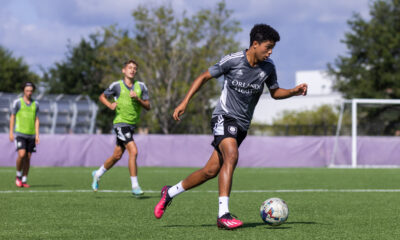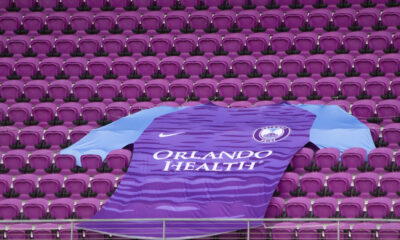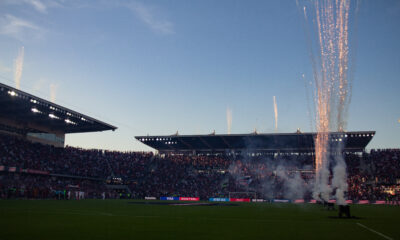Orlando City B
USL Academy’s Impact On Orlando City
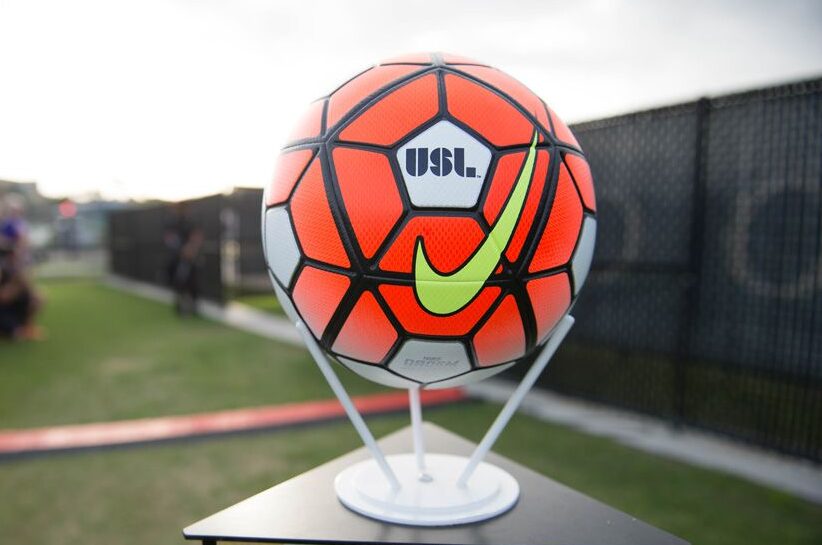
Last week brought the news that the United Soccer League was continuing its restructure, unveiling plans to create a fourth competition with the introduction of the USL Academy Cup later in the year, the organization’s first formal foray into academy soccer. Having moved the entire academy out to Montverde and with the imminent relaunch of Orlando City B, where does both the restructure and the new Academy Cup leave Orlando City?
It’s no secret that the soccer landscape in America has been far from simple to follow. A convoluted web of separate, yet sometimes equal, leagues have come in and out of existence with varying success. Within the last couple of years, the USL ran parallel with the North American Soccer League, both holding second division status in 2017 as sanctioned by the United States Soccer Federation.
This was after the USL was a third tier league even as recently as when OCB was a member in 2016. Since then, a dispute with the USSF forced the NASL into hiatus, where it still remains, while MLS ended its dedicated MLS Reserve league back in 2014, instead requiring teams to enter their reserve teams into the USL or to affiliate with an existing USL team, like Orlando did with Louisville City in 2015.
To add to the matter, a further new third division, the National Independent Soccer Association, has put forward intentions to begin play in August this year. Teams have not been immune to adding to the confusion either, with countless going on hiatus, changing league affiliation, relocating, or folding altogether. In short, there hasn’t been much by way of stability and, as a result, it has proven difficult to properly provide a clear, concise, and reliable pathway from the youth to the professional level.
As of 2019, the USL has created three leagues: USL Championship (USLC), USL League One (USL1), and USL League Two (USL2).
- USLC is simply a rebranded USL, a thriving league that is now the sole second division in U.S. soccer and currently contains 36 teams.
- USL1 is a brand new, fully professional third division that technically contains 12 teams, although only 10 are set to contest the inaugural season beginning later this month, with the newly reformed OCB being one of them. It is the lowest level of professional soccer in the country.
- USL2, unofficially a fourth division, as USSF does not recognize formal levels below the third tier, is now what was formerly known as the Premier Development League. The highest level amateur league was a regular landing spot for elite collegiate talent prior to their MLS draft eligibility. It sits roughly equal to the National Premier Soccer League (NPSL), although the NPSL has no age restrictions, unlike the USL2.
When the USL originally launched the reformat, it marketed USL2 as #Path2Pro, but with the new USL Academy announcement, it appears the league already has plans to extend that vision even further. It should be applauded that the USL continues to take such a significant hands-on role in the nation’s youth development. As its partnership with MLS enters its seventh season, 21 of MLS’ 24 teams have USL ties. Twelve teams operate their own reserve sides (nine in USLC and three in USL1), while nine have affiliate agreements, including two with so-called “hybrid” deals (eight in USLC and one in USL1).
Fielding reserve teams in professional leagues is nothing new. In Spain, for example, reserve sides compete in the same league system, although they are not eligible for promotion to the same division as their parent club, nor can they compete in the Copa del Rey. But other countries, such as England, continue to run dedicated and separate reserve leagues, with the English system running a two-tier system across two age groups.
The USL therefore currently sits in an unusual middle ground as an American hybrid of both systems (minus the promotion/relegation, obviously). The biggest teams, like the hugely successful New York Red Bulls and Portland Timbers systems, not only have a reserve side capable of challenging in the USLC like a La Liga reserve team, but they also run U-23 teams in the amateur USL2 league for players too old to be in academies but not quite at the level of the USLC.
Meanwhile, teams like Orlando City (along with Toronto and FC Dallas) have essentially condensed both of those levels into one, and will field their U-23/reserve hybrid team in the USL1. Orlando folded its U-23 side in 2015 in lieu of OCB’s creation, with the team initially entering what is now the USLC before the hiatus.
The new OCB squad has an average age of just over 20, with the oldest, Evan John, having just turned 24 earlier this year. Coupled with new Executive Vice President of Soccer Operations Luiz Muzzi’s impeccable record of Homegrown Players with Dallas, there’s hope the latest move to USL1 will lay the groundwork for a similar set of results in Central Florida in the future.
FC Dallas’ 2–1 win over Colorado at the weekend saw the Texas team start five Homegrown Players. Orlando City B’s success will not be measured by the final table standings, but by how many players it manages to develop for the senior MLS side, a process that has already started with the likes of OCB midfielder and academy product Jordan Bender already seeing senior minutes in the Orlando City Invitational during the preseason.
Where the Academy Cup Fits In
The move to create the USL Academy Cup seems like the next logical step in formalizing the USL’s vision for soccer infrastructure, giving the opportunity for all its member clubs to host their own academies and bring a level of continuity to the development ladder. It’s not that academy programs don’t already exist. Many sides already have U.S. Soccer Development Academy (DA) or Elite Club National League (ECNL) teams. Indeed, there is a massive surplus with DAs currently boasting 197 clubs scattered across the country, while ECNL lists 94.
The USL’s issue is the lack of alignment. Many of those teams do not have a direct link to professional sides and there are plenty of USL teams across all three levels that currently have no youth setup whatsoever. Only 32 of the USL’s 118 clubs currently have teams competing in the U.S. Soccer Development Academy and a only 10 have teams that compete in other competitions. Meanwhile, a side like Louisville City, which is coming off the defense of its USL title still has no youth program at all.
The USL’s intention, therefore, is not to eliminate those academies but instead to realign them by getting pro teams to engage with community clubs in their shared mission of developing professional players locally and providing a realistic vision of a path to pro soccer. Whether it be by absorbing them into their professional brand, creating formal affiliations, or pooling regional talent in Centers of Excellence, this is what the USL is aiming for.
In theory, having a collective approach with the support of a professional team has very little downside, as pro teams help offset costs. This approach also grows the potential of selling leagues, increases local fan engagement, and helps to accelerate those teams’ timelines that haven’t been able to write a blank check to fully fund a youth program, top to bottom.
Orlando City already has academy sides though, so how does this help OCSC? Well, it does little to affect the OCSC pipeline on a macro level in comparison to other clubs that have no existing academy. However, it could potentially extend the team’s reach and do a better job at identifying local talent earlier and providing these players with better facilities and coaching. What’s more appealing is the competition itself, even in its soft launch.
Initially, the USL Academy Cup looks similar to what the U.S. Open Cup is to professional sides and mirrors what MLS does with the Generation Adidas Cup. Spread across two age groups, it brings academies from the clubs across all three levels of the USL into one tournament.
The U-17s will compete in two regional qualifiers split between the Eastern and Western Conference. Regional results will determine seeding and placement ahead of the national event in May.
The U-13 age group will just compete at the national events. USL Senior Director of Youth Development Liam O’Connell stressed that the USL doesn’t want to cull existing competitions and monopolize the youth market. The competition will merely help flesh out the calendar with an elite competition while keeping costs as low as possible, hence the U-13s not having to go through regional qualifiers. Targeting two key pre-professional age groups, and under the guise of the USL and its professional partners, the competition has the potential to reinforce ideals and aspirations for players hoping to make it in professional soccer without moving abroad.
It might all seem like a pipe dream right now and, frankly, the scale is vast, with the individual nuances of each region, club, or even player far too complex to examine individually. Nor is there any way of predicting the impact the new competition will have both in its debut year and down the road. But in the simplest of terms, it’s a step or two in the right direction for Orlando City and soccer in this country.
Orlando City B
Orlando City Signs Academy Midfielder Colin Guske to MLS NEXT Pro Contract
The 17-year-old OCSC academy midfielder signs a one-year MLS NEXT Pro deal.
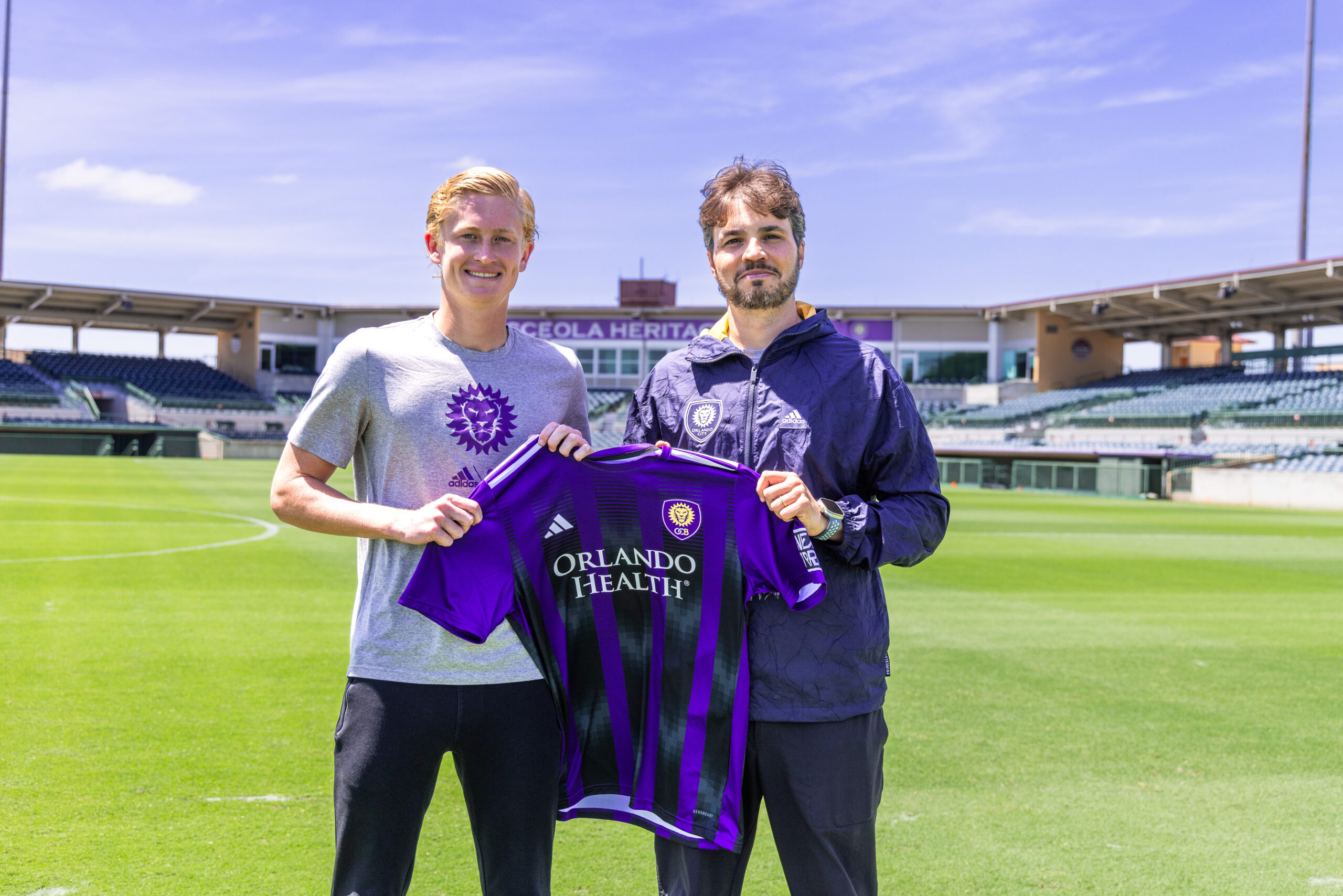
Orlando City announced this afternoon that the club has signed academy product Colin Guske to an MLS NEXT Pro contract with its reserve side, Orlando City B. The deal is for one year, running through the 2024 season.
“Colin is another talented young player coming from our development pathway in the way that we envisioned at the beginning of this project,” Orlando City Vice President of Soccer Operations and Technical Director Ricardo Moreira said in a club press release. “Colin is also another player who benefited from the full integration between our academy, OCB, and first teams inside our training facilities, and took advantage of the time he had in preseason training camp with the first team to sharpen his tools and show us that he’s ready for that next step along the development pathway. Despite his age, Colin shows a lot of personality on and off the field and we truly believe his future with us will be bright.”
The 17-year-old St. Johns, FL native joined the club’s academy in 2020 and made his debut for OCB in the season opener against Atlanta United. He made an immediate impact for the club’s second team, scoring in the 49th minute, which ended up being the game-winning goal.
So far this season, Guske has made four appearances (all starts), playing 360 minutes, and scoring a goal. He’s played each game in the defensive midfield alongside team captain Imanol Almaguer.
Guske joins his two older brothers in going through the Orlando City academy and playing with OCB. However, Colin is the only Guske brother to sign a professional contract with the club as the others were on academy deals, enabling them to play in college. Owen, the oldest of the three, played with OCB during the 2020 USL League One season and is currently playing at Jacksonville University. Liam played with OCB during the 2022 MLS NEXT Pro season and is currently playing at Seton Hall University.
The young midfielder is the second academy product the club has signed to an MLS NEXT Pro contract this year after 18-year-old defender Zakaria Taifi was inked to a second-team contract on March 12. The move is a logical step for both players in their progression through the club’s development system, which they hope results in a Homegrown Player contract with the first team.
Orlando City B
Orlando City B vs. Crown Legacy FC: Final Score 2-0 as Young Lions Claim Road Victory
The Young Lions will bring all three points back from North Carolina after a complete win over Crown Legacy.
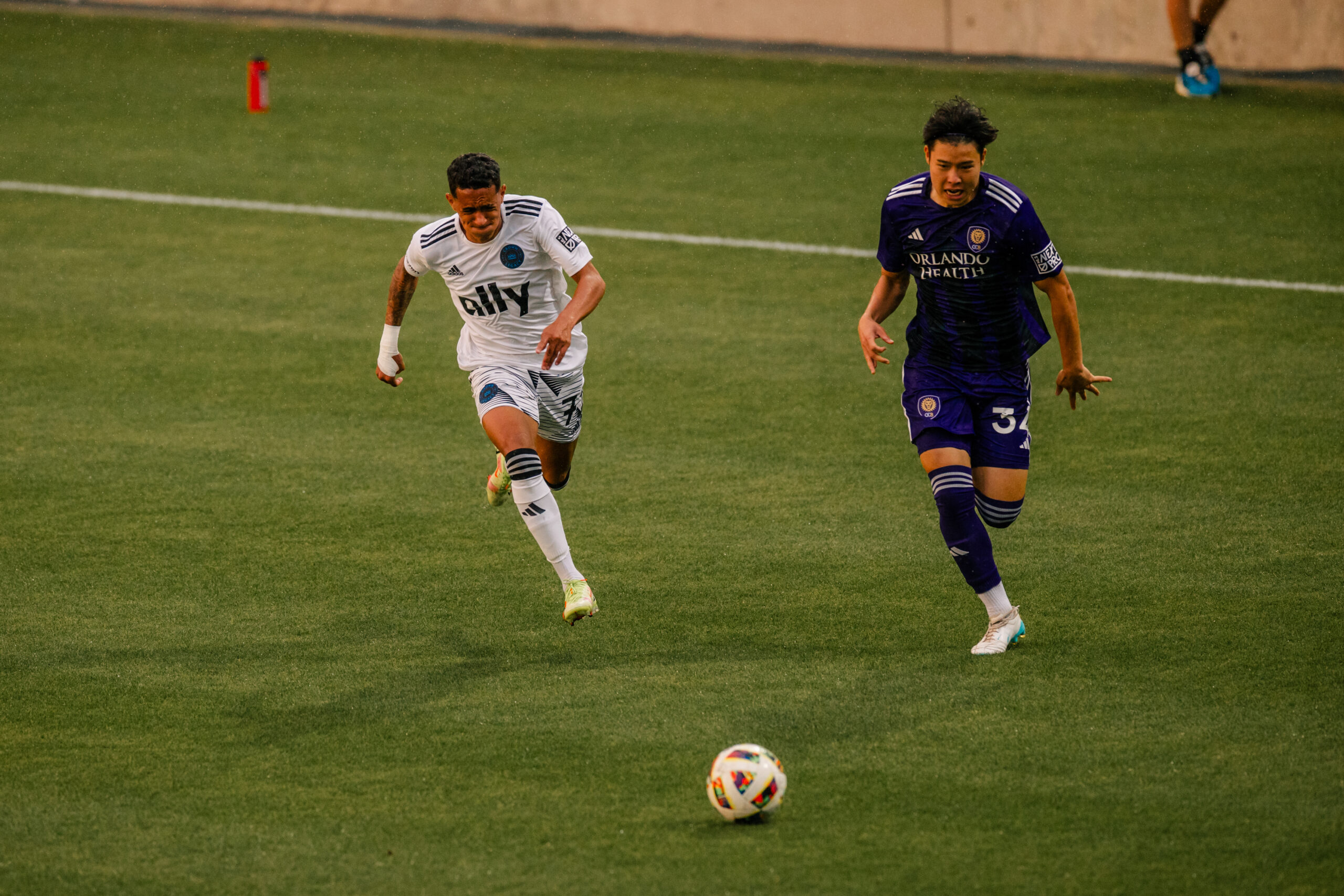
Alex Freeman and Shak Mohammed scored and Javier Otero made six saves as Orlando City B defeated Crown Legacy FC, 2-0 at the Sportsplex at Matthews in Matthews, NC. OCB (2-1-2, 9 points) completed its two-game road trip by claiming four out of six possible points and is now unbeaten on the road in four matches (2-0-2), with a shootout win after one of its two draws. Crown Legacy remains winless on the young season (0-2-3, 5 points).
Manuel Goldberg’s lineup included just one change from the squad that started the last game at Philadelphia Union II. Manuel Cocca replaced Zakaria Taifi at fullback. The starting back line in front of goalkeeper Otero consisted of Cocca, Thomas Williams, Abdi Salim, and Freeman. Colin Guske and Imanol Almaguer played in the central midfield behind an attacking midfield line of Yutaro Tsukada, Jhon Solis, and Wilfredo Rivera, with Mohammed up top.
OCB was the better side in the first half, but squandered too many good attacks with a misplaced pass or by simply making a poor decision.
The first look at goal fell for OCB in the third minute. Tsukada intercepted the ball in the attacking half and drove forward into the box against two defenders. After entering the penalty area, the first-year pro unleashed a shot that deflected out for a corner. The Young Lions couldn’t get to Tsukada’s service, which bounced in the box before being cleared.
The hosts had a great chance in the fifth minute, shortly after the skies opened up and a heavy rain began to fall. Nimfasha Berchimas cut in from the right side, beat Williams, and sent a shot skipping toward goal. Otero did well to make the save and not give up a rebound on the hard shot in the wet conditions. The rain eventually subsided and became less of a factor.
Solis went down in the box in the 14th minute with contact but the ref played on and OCB didn’t seem too bothered by it. Seconds later, OCB stole the ball in the attacking half — a common theme in the opening 20 minutes — and Rivera had a go from distance with his left foot, but he didn’t get all of his shot. Not only did the shot lack power, but it was also wide of goal.
OCB should have scored in the 19th minute when a good buildup ended up with Tsukada on the left. The winger gave the ball to Mohammed, who cut back, but even with the goalkeeper down, the forward was reluctant to shoot. It eventually was sent toward goal by Rivera but was deflected out for a corner. The ensuing set piece was played short to Almaguer, who made a good cross into the area. Freeman got his head to it and it was on target, but goalkeeper Chituru Odunze was able to scramble over and knock it out for another corner in the 20th minute.
The Young Lions were less precise with the next corner, misplaying it short and turning it over, requiring Tsukada to break up the transition with a professional foul, earning him a yellow card.
The hosts started to settle into the match over the next 10 minutes, keeping more possession. When OCB broke up Crown Legacy’s play, the Young Lions repeatedly gave it right back in their own half.
Jonathan Nyandjo blazed past Williams and fired a shot that Otero saved in the 23rd minute on a ball over the top. Moments later, a corner kick cross was sent straight at Otero, who caught it.
Three Young Lions took unnecessary bookings before the first half was finished. Almaguer was the first of those in the 27th minute after he appeared to knock the ball out of play off a Crown Legacy player. The throw-in was awarded to the home side, and Almaguer held onto the ball while arguing the call, drawing the yellow.
Three minutes later, Otero made a stop on a shot from outside the box by Tyger Smalls.
OCB finally broke through in the 35th minute, but the play almost broke down in the Crown Legacy box again. Rivera was played into the area but opted to cut back to his right rather than fire from an angle. He just about lost the ball, but it was knocked over to the right side of the box. Freeman got to it first and powered it into the net to give OCB a 1-0 lead.
An excellent chance to double the lead broke down in the 39th minute. A good ball sent Tsukada down the left. He tried to fake out a defender, but took a heavy touch, losing it over the end line before he could get his cross in.
Otero was booked for time wasting and Rivera for something away from the ball in the final minutes of the opening period. Neither team created anything over the final minutes and OCB took its slim lead into the locker room.
OCB finished the first half with more shots (6-3), but Crown Legacy put all three of its attempts on target, compared to just two by the Young Lions. OCB also passed slightly more accurately (87.9%-87.5%) and won more corners (5-1), but did precious little with those set piece opportunities.
Crown Legacy served up a warning sign in the first minute after the restart, sending a shot from distance well over the bar.
OCB came right back and created something in the 48th minute, with a dangerous ball from Solis from the left blocked away from Tsukada. Solis then got into the box on the right in the 51st minute, but this time his cross missed his target and went all the way through the box.
Freeman nearly picked out Mohammed in the 55th minute but the cross was inches too far in front of the forward and he was ruled to be offside anyway.
Otero was called into action at the hour to make two huge saves. OCB expected a whistle for what appeared to be a clear handball and stopped playing. Crown Legacy did not and the ball ended up in the box. Otero made two big stops from close range to preserve the OCB advantage.
Tsukada’s back post delivery of a corner in the 62nd minute might have been an Olimpico attempt and it nearly worked. Cocca was breaking to the back post, but Odunze caught the ball just in front of the goal line. Cocca then nearly picked out Freeman in front in the 67th minute but the cross was inches over the fullback’s head. Orlando regrouped and Tsukada went down at the top of the area but the referee ruled it was a clean play. Two minutes later, Mohammed was sent in behind but the flag came up yet again on another close play.
OCB doubled its lead in the 76th minute. Solis won a free kick near the touchline on the left side and Willian Sangoquiza was booked for the foul. Tsukada took the set piece and sent in a good ball. Mohammed met it in the air and flicked it past Odunze to make it 2-0 with his first goal of the season.
Crown Legacy nearly pulled the goal back in the 83rd minute off a corner kick. The hosts played it short before sending it into the box, but OCB cleared it. The recycled ball came in and found Philip Mayaka in front, but the midfielder sent his shot high over the bar, wasting the opportunity.
Second-half sub Favian Loyola had a chance to put the game away moments later. He blocked a clearance attempt and the ball rolled sideways from left to right near the top of the area. However, the midfielder wasn’t fast enough to beat his defender to the ball and Crown Legacy survived what might have been a third goal.
Crown Legacy had several set pieces down the stretch to try to get back into the game. A corner was headed over in the 85th minute and then a pair of terrible bookend fouls by substitutes Tahir Reid-Brown and Loyola — on the defensive left and right, respectively — gave the hosts unnecessary chances. The Young Lions did well to survive a pair of bicycle kick attempts, blocking the second one, off the Reid-Brown foul. A third shot was blocked in front by the defense and OCB finally cleared.
The best chance in stoppage time went OCB’s way, when the ball found Freeman all alone at the top of the area. The fullback tried to pick out the right corner but missed the net just wide in the 92nd minute.
Chandler Young got the last look of the match off a cross from the right. Salim tried to get under it but misplayed it and it landed on Young’s foot, but the shot went wide to the right of Otero’s goal. Moments later, the game was over.
Crown Legacy fired more shots (15-9), and put more on target (6-4), although only a few of the hosts’ attempts were dangerous. Crown also nipped OCB in passing accuracy (87.8%-86.4%), while the Young Lions won more corners (9-5).
It was a good performance overall by the Young Lions, despite squandering a number of good attacking opportunities in the early part of the match. The defense wasn’t tested often, which is a testament to the press and defensive play from the midfielders and attacking players. The few times Crown Legacy created something, Otero was there.
The Young Lions will finally play a home game, hosting Toronto FC II at Osceola County Stadium on Sunday, April 28.
Orlando City B
Orlando City B vs. Philadelphia Union II: Final Score 1-1 as OCB Draws, Drops Shootout
OCB earned a oad draw with Philadelphia Union II but fell 7-6 in penalties, picking up one point.
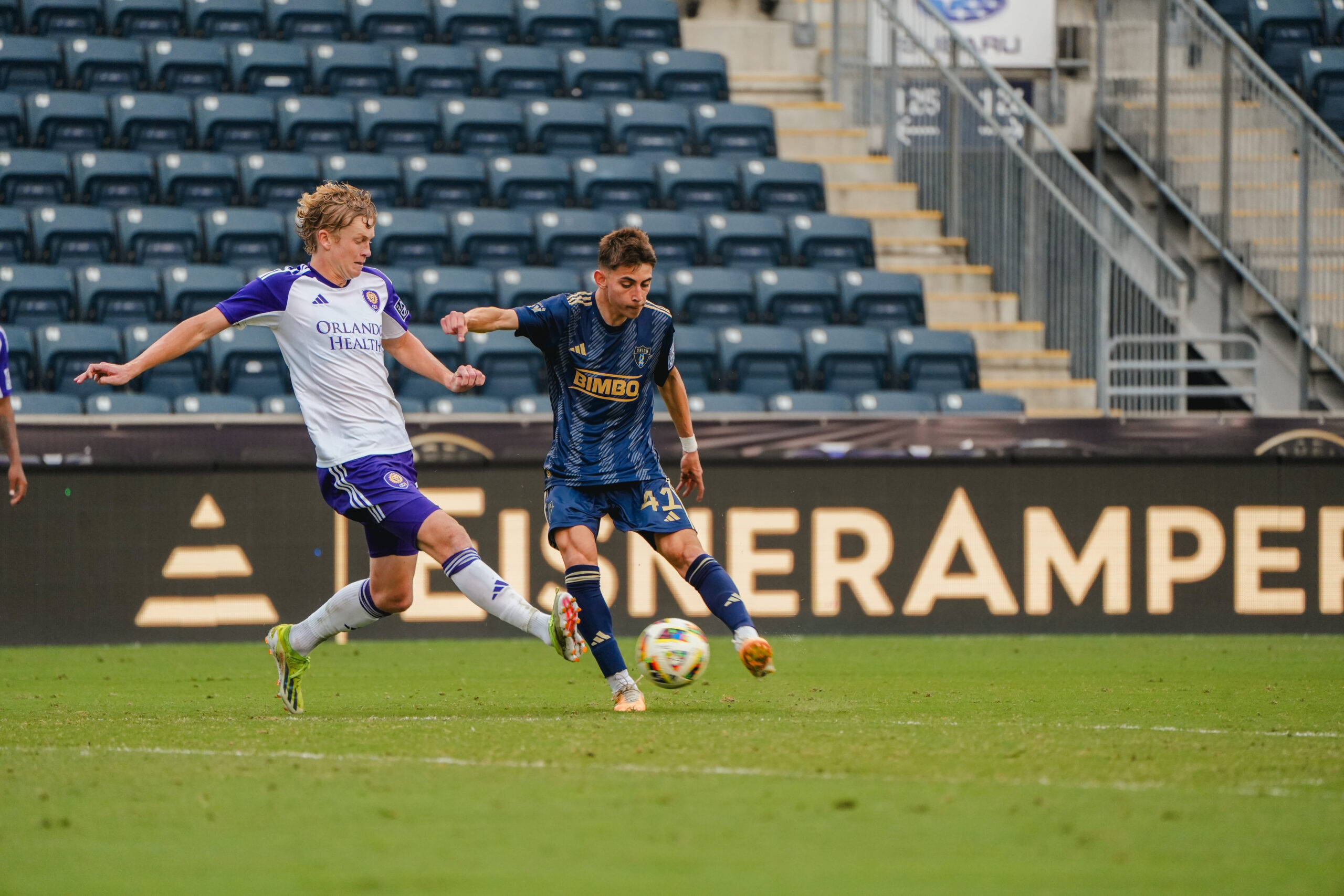
Orlando City B (1-1-2, 6 points) drew Philadelphia Union II (2-0-2, 9 points) at Subaru Park 1-1 in Chester, PA this afternoon. Sal Olivas gave the hosts the lead in the 11th minute, but Wilfredo Rivera equalized less than 20 minutes later. Philadelphia dominated the second half, but OCB was able to keep the hosts out, finishing with a road draw despite not recording any second-half shots. The game went into penalties, where Union II won the extra point in the MLS NEXT Pro standings in sudden death by a 7-6 score.
OCB Head Coach Manuel Goldberg made four changes to the team that lost 2-0 to Inter Miami II on April 2. Thomas Williams, Zakaria Taifi, Colin Guske, and Shak Mohammed entered the lineup for Nabi Kibunguchy, Manuel Cocca, Jeorgio Kocevski, and Jack Lynn. Of the four regular starters taken out of the lineup, only Cocca was included on the bench.
The back line in front of goalkeeper Javier Otero was Alex Freeman, Abdi Salim, Williams, and Taifi. While Guske returned to the lineup for the first time since March 22, the rest of the midfield remained the same, including Imanol Almaguer, Rivera, Jhon Solis, and Yutaro Tsukada. Lynn is likely with the first team tomorrow night, so Mohammed got the start up top.
This was a game of two halves for the Young Lions. In the first 45 minutes, they were strong on the attack, creating problems for Philadelphia. However, they spent the entire second half on their heels, trying to keep the opposition from taking another lead. They were successful, as Union II struggled to hit the target, enabling OCB to bring home a point.
OCB nearly made a mess of its early possession when Williams turned the ball over within the first two minutes. However, Philadelphia was unable to create anything from winning the ball in the Young Lions’ third of the field, ultimately playing it back into their own half.
In the third minute, OCB had the first shot of the game and it was from a familiar source. Tsukada has been problematic on the left for teams around the league early this season and used some nifty footwork to create space. However, his shot was right to Union II goalkeeper Andrew Rick, who made an easy stop.
The Young Lions created another good chance in the eighth minute when Rivera sent Freeman forward. The right back got behind Philadelphia’s back line and got a shot off from the right of the goal, forcing Rick to block the ball out of play for the game’s first corner kick. Rivera’s ensuing set piece to the back post found the head of Solis, who redirected the ball on target. Unfortunately, he wasn’t able to get much on it, enabling Frankie Westfield to head it off the line.
OCB paid for the missed opportunity as the hosts took the lead on the other end. Westfield received the ball on the left and, after a couple of touches, sent a cross across goal. Olivas found space between Williams and Taifi as neither defender picked up the run into the six-yard box. As a result, Olivas was able to touch the ball past Otero to give Philadelphia an early 1-0 lead.
In the 12th minute, Nick Pariano created a chance from the other side. Beating Taifi to the end line, the midfielder sent a low ball across the goal mouth. Fortunately, nobody was making a run for Philadelphia and the ball went harmlessly through the box.
The Young Lions felt they should’ve had a penalty in the 24th minute when Tsukada dribbled past his defender and towards the end line. The midfielder went down as the ball went out of play and threw his arms in the air, but referee Gary Gutierrez awarded a corner kick instead.
OCB found the equalizer in the 30th minute when Solis played a nice ball for Tsukada to run onto. Philadelphia was caught with too many players forward, leaving Rivera alone on the far side of the box. Tsukada found the attacker and Rivera had plenty of time to curl the ball inside the far post to make it a 1-1 game.
The Young Lions nearly took their first lead a minute later when Tsukada played the ball across for Mohammed on the left. The first-team forward’s first touch was to the top of the six-yard box where Rivera was charging in. Unfortunately, he wasn’t able to reach the ball, enabling Union II to clear.
In the 36th minute, Philadelphia had a pair of corner kicks and the second one gave the hosts a good chance to retake the lead. The corner fell in the middle of the box, but Williams was unable to get his foot on the ball. Edward Davis’ first shot was blocked back to Olivas, who got it back to Davis. The forward’s second shot was wide of the target and the Young Lions cleared the danger.
Things got a little feisty in the 39th minute when David Vazuez pulled down Rivera. Following the foul, the Philadelphia attacker kicked out at Rivera, which his OCB teammates didn’t appreciate. Some pushing and shoving ensued, resulting in Vazquez and Williams being booked.
While neither team was able to create any chances, hostilities continued in the 45th minute when Freeman shielded Olivas from the ball. After Olivas went down, Salim stepped over him and Gutierrez had to separate players again. However, no cards were shown during this incident.
At halftime, Philadelphia had more possession (52%-48%), shots (10-6), and corners (6-5), and better passing accuracy (83.3%-77.8%). Meanwhile, OCB had more shots on target (4-2), but only one went in for both teams as they entered the break at 1-1.
Both teams created chances early in the second 45 minutes, but neither resulted in a go-ahead goal. Pariano had the first opportunity as he weaved through the OCB defense and into the box. He eventually took a shot, but Williams got in front to block it, enabling Otero to easily collect it.
A minute later, OCB had its first chance of the half when Solis’ pass for Mohammed split the defense. Mohammed sent a low cross into the box, but none of his teammates were there to get on the end of it.
Following the first couple of chances, things settled down, as neither team was able to create chances. However, Otero came out of his box in the 65th minute to play the ball, not realizing Davis was behind him. Once he recognized the attacker, he cleared the ball out for a Philadelphia throw in.
Union II used the throw-in to create another chance. Vazquez dribbled into the box and Otero tipped the ball away, but only to Olivas. The forward reached the end line and sent a low pass across the goal mouth with Otero still well away from his net. Fortunately, nobody was there and Taifi was able to clear it out of play. The ensuing corner kick was taken by Otero, but the goalkeeper went down after a challenge. The OCB medical staff attended to the young shot stopper, but he was able to continue.
The hosts had another chance in the 73rd minute when Olivas met a low cross near the penalty spot. Taifi got in front of the shot, but deflected it off the crossbar. Philadelphia retained possession, resulting in Giovanny Sequera getting a shot, but this one was well over the target.
In the 75th minute, Williams went down and required treatment. As a result, he had to leave the field for two minutes. Shortly after leaving, Otero collected the ball and went to the ground for the second time in the half. He received treatment long enough for the two minutes to elapse, enabling Williams to return to the field.
The first OCB substitution came in the 81st minute when Favian Loyola replaced Rivera.
As the Young Lions searched for their first shot of the second half, Philadelphia continued to create chances. In the 82nd minute, Olivas cut the ball back for second-half substitute Ryan Zellefrow in the box. Zellefrow’s first touch was a shot, but he sent the ball well over the target.
Goldberg made his second change in the 84th minute, bringing teenage forward Justin Ellis on for Mohammed.
In the 86th minute, CJ Olney found Westfield on the left side of the box. The left back attempted a low cross across the goal, but it was cleared out for a corner kick. The ensuing set piece was cleared by Solis, keeping the game at 1-1.
Philadelphia broke the other way in the 89th minute, forcing Solis to pull back the attacker, and he received a yellow card for it. The break in action enabled Goldberg to make his final change of the game, replacing Tsukada with Thomas Bowe.
Gutierrez added seven minutes to the second half and Philadelphia nearly took the lead in the sixth minute. A good run into the box by Vazquez enabled him to find space for a shot. However, Otero barely got his fingers to the ball, tipping it wide.
Zellefrow had a late chance for Philadelphia with a teammate on the far side of the field. He tried to play the ball around Salim to himself, but the OCB center back did well to stay in front and play it back to Otero. That was the final play of the 90 minutes as the game ended tied.
At the end of 90 minutes, Philadelphia had more possession (58.2%-41.8%), shots (22-6), shots on target (7-4), and corners (11-7), and better passing accuracy (82.8%-73.5%). OCB didn’t have a single shot in the second half, but was able to keep Union II’s 11 second-half shots out of the goal.
As per MLS NEXT Pro rules, the draw meant both teams would receive a point and go to penalties to decide who got a second. It was an impressive shootout, with the first 13 shooters scoring. In the seventh round, Olwethu Makhanya scored, meaning that Taifi had to convert to keep OCB alive. The defender went down the middle and Rick dove to his right, but the goalkeeper was able to drag his feet behind him, knocking the attempt wide. As a result, Philadelphia claimed the extra point.
The result is OCB’s second draw of the season. However, while they defeated Huntsville City FC in the first shootout on March 22, they lost this one, 7-6. The Young Lions remain undefeated on the road (1-0-2), taking six out of a possible nine points in away matches. They have six points from their first four games and remain in seventh in the Eastern Conference.
OCB will continue its road swing as the Young Lions take on Crown Legacy FC in North Carolina next Friday night.
-
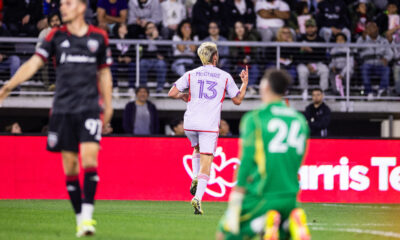
 Orlando City2 weeks ago
Orlando City2 weeks agoOrlando City vs. D.C. United: Five Takeaways
-
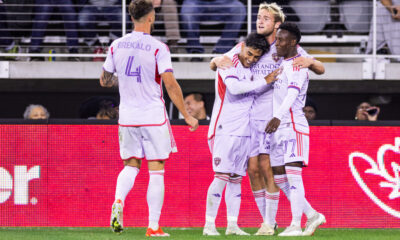
 Orlando City2 weeks ago
Orlando City2 weeks agoOrlando City vs. D.C. United: Final Score 3-2 as Lions Score Twice Late to Win
-
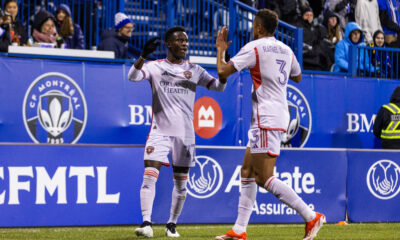
 Orlando City5 days ago
Orlando City5 days agoOrlando City vs. CF Montreal: Player Grades and Man of the Match
-
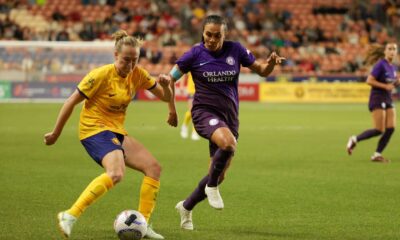
 Orlando Pride2 weeks ago
Orlando Pride2 weeks agoOrlando Pride vs. Utah Royals: Final Score 1-0 as Pride Claim First Win of 2024 NWSL Season
-
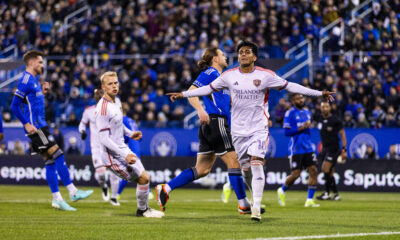
 Orlando City6 days ago
Orlando City6 days agoOrlando City vs. CF Montreal: Five Takeaways
-
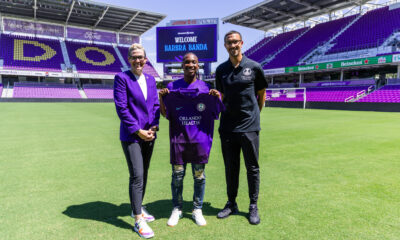
 Lion Links1 week ago
Lion Links1 week agoLion Links: 4/17/24
-
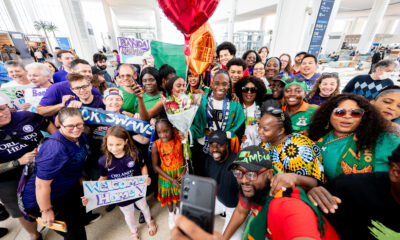
 Lion Links2 weeks ago
Lion Links2 weeks agoLion Links: 4/15/24
-
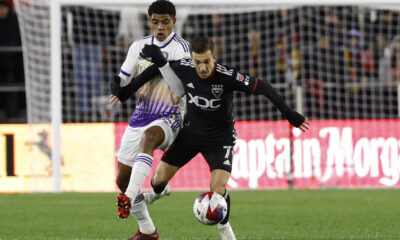
 Orlando City2 weeks ago
Orlando City2 weeks agoOrlando City vs. D.C. United: Preview, How to Watch, TV Info, Live Stream, Lineups, Match Thread, and More


